colored pencils
by JuliannaKunstler.com
STEPS
spectrum
Start with primary colors: Red, Yellow, Blue
Fade the colors towards where the secondary colors (Orange, Green, Purple) will go - for easy blending.

Add Orange. Use Orange to blend with the Red.

Use lighter color over a darker for better blending. Use Yellow pencil to blend with Orange.

Add Green. Use Green to blend with Blue.

Use Yellow to blend with Green. Add Purple.

Blend with Blue.


curve
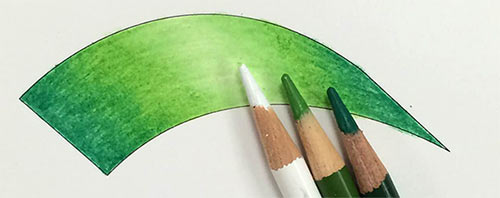
Color in a curved surface:
I used 3 pencils: White, Medium Green, and Dark Green.

Start with a Medium Green.
Shade lightly most of the surface.

Go over with the same Medium Green pencil and color more, leaving the middle as is.
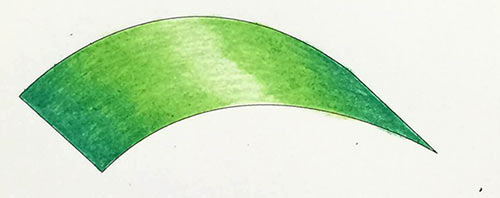
Use Dark Green and color in the sides of the shape, use Medium Green again to blend the two colors.

Use White pencil to blend the middle part - the lightest area.
ribbon
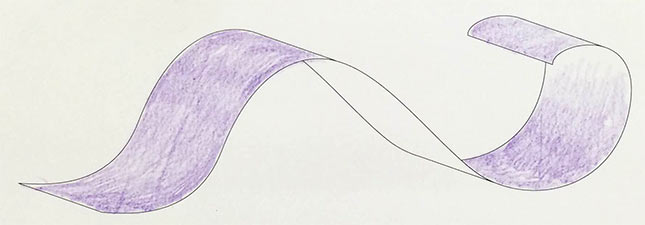
I used 4 colored pencils: White, Black, Medium Violet, Dark Purple.
Define the light source as being above the ribbon.
Use medium Violet to lightly shade the top side of the ribbon (the side, that faces the light source).

Use Dark Purple for the areas that do not receive the direct light.
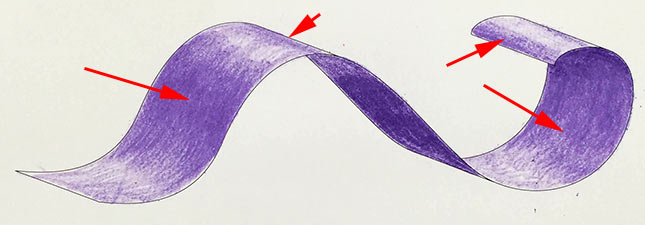
Shade with Medium Violet the sides of the curves.
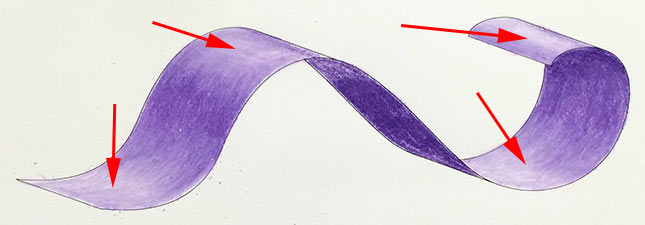
Use White pencil to blend the highlighted areas.

Use Black to add shadows to the darkest areas.
Use Dark Purple for blending.

sphere
Chiaroscuro is a method for applying value to a two-dimensional piece of artwork to create the illusion of a three-dimensional solid form.
This way of working was devised during the Italian Renaissance and was used by artists such as Leonardo da Vinci and Raphael. In this system, if light is coming in from one predetermined direction, then light and shadow will conform to a set of rules.
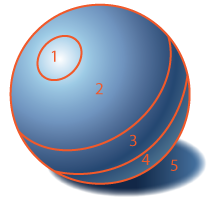
- Highlight is the lightest value of an object. This is where direct light hits the surface.
- Light - as the surface curves, it does not get as much light, so value becomes slightly darker.
- Shadow - once the surface curves away from the light source, it does not receive any direct light, but it does get some indirect light from the surroundings - that's why it is not completely black.
- Reflected light is light that is bounced off the surfaces (surroundings), making the value slightly lighter.
- Cast shadow is the darkest value, but further it is from the object - lighter it gets.
Same exact pattern should be applied to shading all forms. The only thing that changes - is the shape of the pattern.
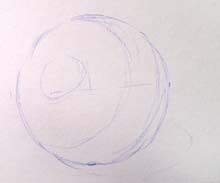
I like to sketch out the contour lines with a pencil of the main color.
For more complex drawings I would use a regular drawing pencil (not too soft though).
Draw the outlines and major value changes.

Start shading lightly with the main color.
Keep strokes small and light.

Use lighter colors and White pencil for blending and mixing.
Add a layer of a darker color where necessary, then use the main color to blend over.




